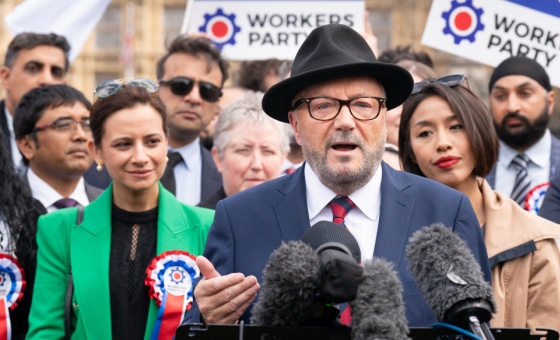This is the last article you can read this month
You can read more article this month
You can read more articles this month
Sorry your limit is up for this month
Reset on:
Please help support the Morning Star by subscribing here
PICTURE it if you will. It’s a family gathering and those crowded round the living room decide it’s time for the parlour game Who am I? The opening clues are male, alive, and in the news recently.
“I used to be the chief executive of a major multinational company,” the player says. “It has plundered the public purse for billions in the last few years alone. I was chief executive for five years — in that time I made more than £6 million in wages, not counting my shares.
“When I was chief executive we paid out £400m in dividends to the shareholders. In the same time we short-changed the pension fund for the workers which is why it has a black hole in it of almost £600m.
“In July last year my own gravy train hit the buffers. By then the company had amassed an £850m debt. I got the sack. Mind you by the time I got the chop I’d already pocketed half a million in wages.
“The board done a deal a year ago. It protected our executive bonuses, even if the company went bust. Who am I?
“I’m Richard Howson, formerly the chief executive of Carillion which went bust in January with £1.5 billion debts.”
This parlour quiz tells you all you need to know about where the political obsession with privatising public services in Britain has brought us.
And it embraces Westminster, Holyrood, and huge swathes of local government in Scotland. The downfall of Carillion exposed what is going on. How long can the Howsons of this world be allowed to laugh all the way to the bank at our expense?
Carillion is a stark warning about what happens when you worship in blind faith, for an eternity, at the Holy Grail of privatisation.
We now know that the same rip-off contracts that were in place in the Carillion structures using “umbrella” companies are being introduced by some of the contractors who have stepped into Carillion’s shoes — and this on Scottish government sponsored contracts where the politicians claim they are powerless to stop it.
It is time for a new debate about the funding and structures of public services which has to challenge the broken model of outsourcing and privatisation.
This week’s STUC Congress, and the motions on public services, can become a starting point for this.
That said the Congress also needs to look beyond the issues of the politics of austerity, the funding of public services and the broken, misplaced dreams of privatisation.
The age old labour movement adage of “you can’t control what you don’t own” remains as relevant as it ever was.
Today’s current jobs catastrophes in Scotland confronting the workers at Youngs Pinney’s in Annan, in the south of Scotland, and 2 Sisters in Cambuslang, outside Glasgow — with what could be 900 jobs on the line — demonstrate that we need to build new structures of public ownership in a modern Scotland to replace the current dictatorship of shareholders and capital.
We cannot continue to stagger from crisis to crisis and from government task force to government task force.
The STUC debates on the pressing need for a national, planned, linked up industrial strategy for Scotland should be a catalyst for the creation of new patterns of ownership to confront the conventional wisdom of today’s capitalism and its towering social inequalities.
And if you think this is the same old tired rhetoric maybe you should consider the story of Novograf, in the town of East Kilbride, outside Glasgow.
Novograf was a hugely successful sign printing company with big names clients across Britain like Pizza Hut, Greggs and the supermarket chains the Co-op, Iceland, Tesco and Waitrose.
Its owners John Clark and Alistair Miller built the business and were ready to cash out on all their business enterprises early in 2016.
The problem was that all the suitors who came to call — including one European multinational — could not guarantee the future of the East Kilbride plant and had the odour of asset strippers.
So Clark and Miller sold the business to their workers. They had to lend the money themselves for the buy-out as not one of the big banks was prepared to help.
However the loans are well on the way to being paid off now — with interest — and Novograf is now employee-owned with Clark and Miller trustees on the workers’ board.
In 2017, the first full year of the workers’ company, sales went up 20 per cent and the company took on an extra 22 new employees.
Of course this East Kilbride venture isn’t new. The history of the workers’ movement has many such examples across Europe and even in the US.
However it shows that different types of workers’ ownership can be an alternative to asset-stripping, carpet-bagging and closure in these days of economic crisis.
Pat Rafferty is the Scottish Secretary of Unite.












